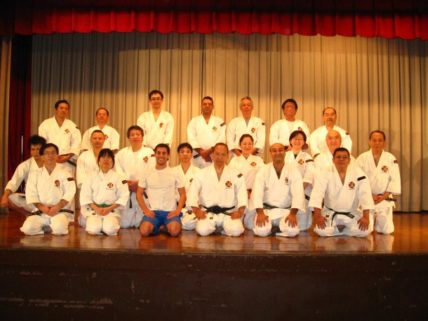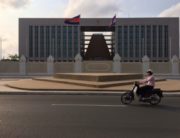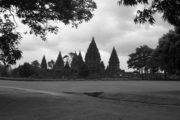Unlocking the secrets of Japanese martial art Shorinji Kempo
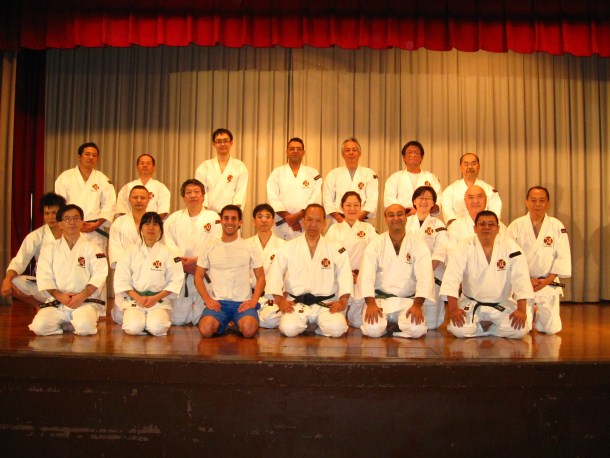
Shorinji Kempo group photo – Tokyo, Japan
After my first few weeks in Tokyo I discovered Shorinji Kempo and decided to dedicate my three months in the city training in this Japanese martial art. I had never heard about Shorinji until I arrived in Tokyo, and since then I’ve learned quite a bit about it.
Doshin So founded Shorinji Kempo in 1947 after his returning to Japan from China at the end of World War 2. During his military career Doshin spent most of time in Manchuria where he saw the hardships and realities of war. Upon his return he saw that his people’s society, economy, and hearts were in turmoil. Seeing this he decided that he wanted to help make a change.
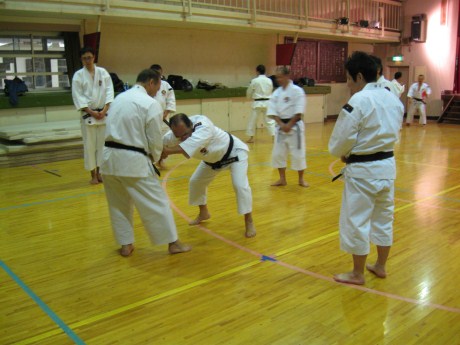
Japanese martial arts Shorinji Kempo training – Tokyo, Japan
In order to build a peaceful world and rebuilt his people in body and spirit Doshin created Shorinji Kempo. The goal of Shorinji was to transform society through peaceful means. As a result, Shorinji kempo is founded on Buddhist principles where compassion, faith, justice, courage, solidarity, cooperation, and living up to one’s personal potential are the cornerstones to building a better world.
Physically Shorinji Kempo is broken up into goho and juho. Goho are known as hard techniques and include strikes, kicks, chops, evasions, and blocks. Juho are known as soft techniques which include defenses such as throws, pins, holds, and releases similar to those found in judo.

Practicing Shorinji Kempo juho technique – Tokyo, Japan
Shorinji Kempo is unique in two ways. First it has a strong Buddhist foundation where the individual’s spirituality is valued as much as or more than their physicality. The second is in the martial arts physical techniques which combine a variety of martial arts such as kung fu and judo.
Shorinji Kempo is a martial art designed to provide individuals of any age, gender, or size with the skills to defend themselves. In the last few years there has been a huge push to attract and encourage women to participate. In fact, Shorinji is one of the few martial arts where women play a major role as Yukki So the chairperson, president, and daughter of Doshin So has made it her goal to bring women into the discipline.
The most unique aspect of Shorinji is the fact that no matter where you train the standards, expectations, and training are the same. Shorinji Kempo has a global governing body where all members are given an online profile, pay the same rates no matter where they train, and have to follow the same grading system no matter where they are in the world.
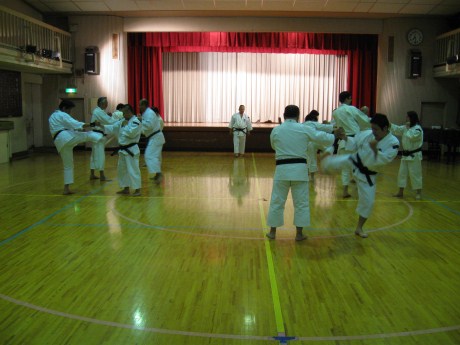
Japanese martial arts Shorinji Kempo training – Tokyo, Japan
What makes Shorinji Kempo difficult is that everything is done in Japanese. This means that to become proficient in Shorinji Kempo, one has to learn all the Japanese names for the techniques. The great thing that comes out of this is that internationally everything is the same and everyone learns the same.
For me learning Shorinji Kempo was a rewarding experience. Not only did I get to train in a uniquely Japanese martial art with a strong message of peace. I became a member of an amazing group where I made great friends, learned Japanese, and earned my green belt. So if you’re looking to study a Japanese martial art in Japan or somewhere around the world I would highly recommend giving Shorinji Kempo a try.
For more information on where I trained check out:
The Tokyo Chiyoda Shorinji Club @

